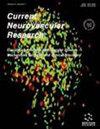Comparison of 4 mm-sized and 3 mm-sized Stent Retrievers in Mechanical Thrombectomy for M2 Occlusion
IF 1.7
4区 医学
Q3 CLINICAL NEUROLOGY
引用次数: 0
Abstract
Introduction: A stent retriever (SR) is widely used in mechanical thrombectomy (MT) for M2 segment occlusion. However, the suitable size of SR in M2 occlusion remains unclear. Therefore, we aimed to compare 4 mm-sized SR with 3 mm-sized SR in M2 occlusion. Methods: Patients who underwent MT with SR for M2 occlusion were dichotomized into 4×20 mm SR and 3×20 mm SR groups. Then, 1:1 propensity score matching was performed. The M2 segment was divided into proximal and distal segments according to the occlusion site. Subgroup analysis was then performed for each cohort. Results: A total of 111 patients were enrolled, with 4×20 mm SR and 3×20 mm SR applied in 72 (64.9%) and 39 (35.1%) cases, respectively. In propensity score matching, mean number of stent passages for reperfusion was significantly lower in the 4×20 mm SR group than in the 3×20 mm SR group (1.5 ± 0.8 vs. 2.1 ± 1.1; p = 0.004). First-pass reperfusion (FPR) was more highly achieved in the 4×20 mm SR group than in the 3×20 mm SR group (52.6% vs. 42.1%; p = 0.007). In both proximal and distal occlusion cohorts, the 4 mm SR group showed lower mean number of SR passage (p = 0.004 and p =0.003, respectively) and higher FPR rate than the 3 mm SR group (p = 0.003 and p = 0.007, respectively). Conclusion: In MT for M2 occlusion, 4×20 mm SR enables an effective procedure with lesser SR passage for reperfusion and a higher rate of FPR than 3×20 mm SR. result: A total of 111 patients were enrolled, with 4×20 mm SR and 3×20 mm SR applied in 72 (64.9%) and 39 (35.1%) cases, respectively. In propensity score matching, mean number of stent passages for reperfusion was significantly lower in the 4×20 mm SR group than in the 3×20 mm SR group (1.5 ± 0.8 vs. 2.1 ± 1.1; P = 0.004). First pass reperfusion (FPR) was highly achieved in the 4×20 mm SR group than in the 3×20 mm SR group (52.6% vs. 42.1%; P = 0.007). In both proximal and distal occlusion cohorts, the 4 mm SR group showed lower mean number of SR passage (P = 0.004 and P =0.003, respectively) and higher FPR rate than the 3 mm SR group (P = 0.003 and P = 0.007, respectively).在 M2 闭塞的机械血栓清除术中使用 4 毫米大小和 3 毫米大小支架取栓器的比较
导言:支架回取器(SR)广泛应用于 M2 段闭塞的机械血栓切除术(MT)。然而,M2 闭塞中适合的 SR 尺寸仍不明确。因此,我们旨在比较 4 毫米大小的 SR 与 3 毫米大小的 SR 在 M2 闭塞中的应用。方法:将因 M2 闭塞而使用 SR 进行 MT 的患者分为 4×20 mm SR 组和 3×20 mm SR 组。然后进行 1:1 倾向评分匹配。根据闭塞部位将 M2 节段分为近端和远端节段。然后对每个组群进行亚组分析。结果共有 111 例患者入组,其中 72 例(64.9%)应用了 4×20 mm SR,39 例(35.1%)应用了 3×20 mm SR。在倾向评分匹配中,4×20 毫米 SR 组的再灌注支架平均通过次数明显低于 3×20 毫米 SR 组(1.5 ± 0.8 vs. 2.1 ± 1.1;P = 0.004)。与 3×20 mm SR 组相比,4×20 mm SR 组实现首次再灌注(FPR)的比例更高(52.6% 对 42.1%;P = 0.007)。在近端和远端闭塞队列中,4 毫米 SR 组比 3 毫米 SR 组显示出更低的平均 SR 通过次数(分别为 p = 0.004 和 p =0.003)和更高的 FPR 率(分别为 p = 0.003 和 p =0.007)。结论在 M2 闭塞的 MT 中,与 3×20 mm SR 相比,4×20 mm SR 可使再灌注的 SR 通道更少,FPR 率更高,是一种有效的手术:共有 111 名患者入选,其中 72 例(64.9%)和 39 例(35.1%)分别采用了 4×20 mm SR 和 3×20 mm SR。在倾向评分匹配中,4×20 毫米 SR 组的再灌注支架平均通过次数明显低于 3×20 毫米 SR 组(1.5 ± 0.8 vs. 2.1 ± 1.1;P = 0.004)。与 3×20 mm SR 组相比,4×20 mm SR 组的首次再灌注(FPR)成功率更高(52.6% 对 42.1%;P = 0.007)。在近端和远端闭塞队列中,4 毫米 SR 组比 3 毫米 SR 组显示出更低的平均 SR 通过次数(分别为 P = 0.004 和 P =0.003)和更高的 FPR 率(分别为 P = 0.003 和 P =0.007)。
本文章由计算机程序翻译,如有差异,请以英文原文为准。
求助全文
约1分钟内获得全文
求助全文
来源期刊

Current neurovascular research
医学-临床神经学
CiteScore
3.80
自引率
9.50%
发文量
54
审稿时长
3 months
期刊介绍:
Current Neurovascular Research provides a cross platform for the publication of scientifically rigorous research that addresses disease mechanisms of both neuronal and vascular origins in neuroscience. The journal serves as an international forum publishing novel and original work as well as timely neuroscience research articles, full-length/mini reviews in the disciplines of cell developmental disorders, plasticity, and degeneration that bridges the gap between basic science research and clinical discovery. Current Neurovascular Research emphasizes the elucidation of disease mechanisms, both cellular and molecular, which can impact the development of unique therapeutic strategies for neuronal and vascular disorders.
 求助内容:
求助内容: 应助结果提醒方式:
应助结果提醒方式:


